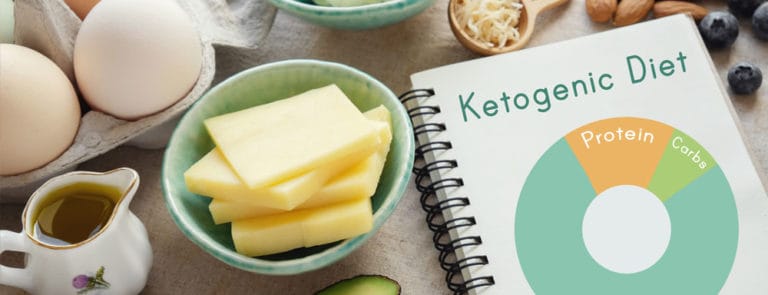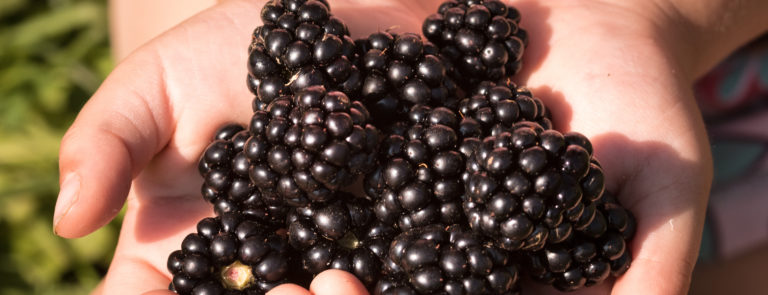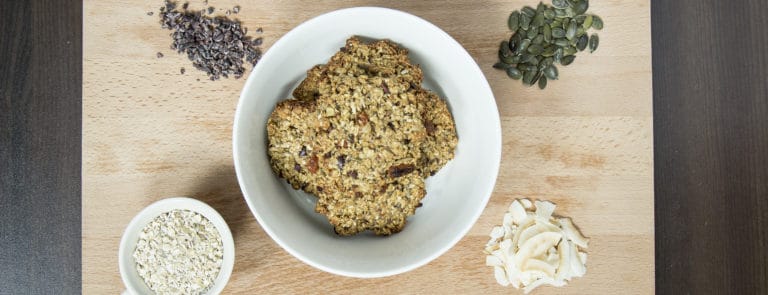10% off £35
Keto diet for vegans & vegetarians

The ketogenic, or keto diet, is reportedly one of the most popular low-carb diets on the planet.1
This on-trend way to eat has soared in popularity in recent years with its rep of helping people to lose weight.
But just how tricky is it to go keto if you’re a vegetarian or vegan?
At first glance, it may not look promising – the low carb, high-fat diet scraps carbohydrates for a high-fat menu that most followers get from eating lots of meat.
But with some simple switches and forward planning, it’s possible for vegetarians and vegans to board the keto diet train.
What is the keto diet?
Followers of the keto diet plan cut down on foods that contain carbohydrates to try to make their bodies burn more fat than usual.
On a normal diet, our body’s first choice for fuel is glucose, which it gets from the carbs we eat.
However, on a low-carb ketogenic diet our glucose levels drop, and the body is forced to find another source of fuel to burn instead.
And luckily, its second choice is the very thing most dieters want to get rid of – fat.
The ultimate goal of the keto diet is to stay in this low-glucose mode, called ketosis.
Once in this stage, our liver uses fat supplies to produce molecules known as ketones.
As we burn this new source of fuel, our fat stores begin to drop and so we shed excess pounds – which is why the keto diet plan has gained popularity with those looking to lose weight.
Different types of keto diets
There are several variations of the keto diet, they are:2
- Standard Ketogenic Diet (SKD) - this is a very low-carb, moderate-protein and high-fat diet. It typically contains 75% fat, 20% protein and only 5% carbs
- Cyclical Ketogenic Diet (CKD) - involves periods of higher-carb refeeds, such as five ketogenic days followed by two high-carb days
- Targeted Ketogenic Diet (TKD) - allows you to add carbs around workouts
- High-protein ketogenic diet – is similar to a standard ketogenic diet, but includes more protein. The ratio is often 60% fat, 35% protein and 5% carbs.
What does keto mean?
Yes, it is a bit of an unusual-sounding word, isn’t it? The keto diet has this name because it makes your body produce small fuel molecules called ‘ketones.’
They are essentially another energy source for your body that can be used when your blood sugar (glucose) is in short supply.
When you eat very few carbs or very few calories, your liver produces ketones from fat. These ketones then fuel the body, brain included.
The brain is a hungry organ that consumes lots of energy every day, and it can’t run on fat directly. It can only run on glucose or ketones.
On a ketogenic diet, your entire body switches its fuel supply to run mostly on fat, burning fat 24-7.
When insulin levels drop very low, the rate of fat burning can increase dramatically. In turn, it becomes easier to burn off the fat stores that are within your body.3
What to eat on keto diet?
The standard ketogenic diet is a low carb, high fat diet plan that cuts out carbs almost entirely, with followers restricting their menu of carbs to just vegetables, nuts and dairy.
Refined carbohydrates, such as wheat (found in bread and pasta), starch (found in potatoes and rice) and sugary fruits, should be cut out completely.
Instead, the keto food list replaces these foods with alternatives that are high in fat, such as meat, cheese, milk and eggs.
As mentioned above, the aim is to have a daily diet that consists of around 5% carbohydrates, 25% proteins and 70% fats.
So, can a vegetarian do the keto diet?
Yes! – The keto diet is absolutely vegetarian-friendly, though there are some things to bear in mind.
A standard keto diet food list contains a lot of meat and fish, though there are many plant-based alternatives that can be used instead, along with an additional helping of eggs and dairy products.
What should your cupboards be stocked with on a vegetarian keto diet?
Fats
- Nuts – including pecans, hazelnuts and almonds (also proteins)
- Seeds – such as chia and flaxseeds (also proteins)
- Olive oil
- Olive spread
- Avocados
- Coconut oil
- Hard and soft cheeses
- Grass-fed butter
- Greek yoghurt
Proteins
- Eggs
- Plant-based meat alternatives (tofu, tempeh)
- Protein powders (whey or soy protein)
- Low GI carbs
- Leafy greens
- Asparagus
- Green beans
- Cabbage
- Peppers
- Onions
- Tomatoes
- Mushrooms
- Low-sugar fruits such as berries
Handpicked content: 8 of the best keto protein powders
What should you avoid on a vegetarian keto diet?
- Root vegetables – such as potatoes, sweet potatoes and parsnips
- High-sugar fruits – such as apples, oranges and bananas
- Grains – such as cereal, wheat and rice
- Refined sugar products
Vegetarian keto meal plans – some ideas for you to try
| Meal time | Vegetarian keto meal suggestions |
|---|---|
| Breakfast | Almond flour waffles |
| Chocolate protein shake | |
| Cauliflower toast | |
| Spinach, herb and feta wrap | |
| Lunch |
Roasted bell pepper and cauliflower soup |
|
Courgette ribbons and avocado walnut pesto |
|
|
Mushroom omelette |
|
| Egg salad | |
| Dinner |
Goat’s cheese and mushroom frittata |
|
Broccoli and cheddar cheese quiche |
|
|
Stir fry cauliflower rice |
|
| Spaghetti squash bowl | |
| Dessert |
Coconut macaroons |
|
Peanut butter cookie bars |
|
| Banana blueberry bread |
What should your cupboards be stocked with on a vegan keto diet?
It’s essential that you incorporate as many high fat, low carb vegan foods into your diet. Here are some examples:
- Coconut products – full fat coconut milk, coconut cream, unsweetened coconut
- Oils - olive oil, nut, coconut, avocado
- Nuts and seeds - almonds, brazil, walnuts, hemp seeds, chia seeds, pumpkin seeds
- Nut and seed butter – peanut, almond, sunflower, cashew
- Non-starchy vegetables - leafy greens, brussels sprouts, courgette, broccoli, cauliflower, peppers, mushrooms
- Vegan protein sources – full fat tofu, tempeh
- Vegan full fat ‘dairy’ products - coconut yogurt, vegan butter, cashew cheese, vegan cream cheese
- Avocados – as well as guacamole
- Berries - blueberries, blackberries, raspberries and strawberries (all in moderation)
- Condiments - nutritional yeast, fresh herbs, lemon juice, salt, pepper, spices.
What should you avoid on a vegan keto diet?
- Meat and poultry - beef, turkey, chicken, pork
- Dairy - milk, butter, yogurt
- Eggs - egg whites and egg yolks
- Seafood - fish, shrimp, clams, mussels
- Animal-based ingredients - whey protein, honey, egg white protein
You should significantly cut back on these foods too:
- Grains and starches - cereal, bread, baked goods, rice, pasta
- Sugary drinks - soda, juice, smoothies, sports drinks
- Sweeteners - sugar, agave, syrup
- Starchy veg - potatoes, sweet potatoes, butternut squash
- Beans and legumes - black beans, chickpeas, kidney beans
- Fruits: Only small portions of certain fruit, such as berries, should be eaten
- High-carb alcohol - beer, sweetened cocktails, wine
- Low-fat diet foods – low fat foods that contain high levels of added sugar
- High carb sauces and condiments - barbecue sauce, sweetened salad dressings, marinades
- Highly processed foods – pre-packaged food
Vegan keto meal plans – some ideas for you to try
| Meal time | Vegetarian keto meal suggestions |
|---|---|
| Breakfast | |
|
Grain-free oatmeal |
|
| Carrot muffins | |
| Lunch |
Cauliflower soup |
|
Tomato and mushroom spaghetti squash |
|
|
Broccoli fried rice |
|
|
Thai curry cauliflower soup |
|
| Stuffed avocado | |
| Dinner |
Ratatouille |
|
Whole roasted cauliflower |
|
|
Oven roasted sprouts |
|
| Courgette noodles with avocado sauce | |
| Dessert |
Avocado chocolate mousse |
|
Cinnamon muffins |
|
|
Carrot cake bites/muffins |
|
| Peanut butter cookies | |
| Coconut yoghurt and toppings |
How long does the keto diet take to work?
Good question. If you’ve made the switch and are following either a vegan keto diet or vegetarian keto diet plan, you want to know when you’re likely to start seeing the results of your new eating regime.
As with most lifestyle changes, the impact of the keto diet differs from person to person.
Some people find it takes them much longer to enter ketosis than others. What’s more, many struggle to enter ketosis in the first place.
Generally speaking, it can take between two and four days to enter ketosis, if you’re eating 20 to 50 grams of carbs per day.
However, some people may find it takes a week or longer to reach this state.
There are several factors that can impact how long it takes to for your body to enter ketosis.
They include your typical daily carb intake, your daily fat and protein intake, exercise, your age and your body’s natural metabolism.
For instance, people who used to eat a high carb diet before starting a keto diet may find that it may take them longer to enter ketosis than those who are used to eating a diet that contains low to moderate levels of carbs.
This is because your body needs to deplete its glycogen stores before entering ketosis.
Do you feel a little bit clearer on the keto diet and what it means if you’re vegan or vegetarian? Maybe you’re already embracing it and needed clarity on certain points or some keto diet plan ideas?
Or maybe, it’s something that you’re planning to try and wanted to do your research on before you make the switch to eating keto diet foods?
Either way, we hope your keto journey goes well for you and that the information above has provided the initial overview you need to start off on the best possible path.
Last updated: 6 October 2021
- https://www.healthline.com/nutrition/ketogenic-diet-101#what-it-is
- https://www.dietdoctor.com/low-carb/keto
- https://academic.oup.com/ajcn/article/87/1/44/4633256














